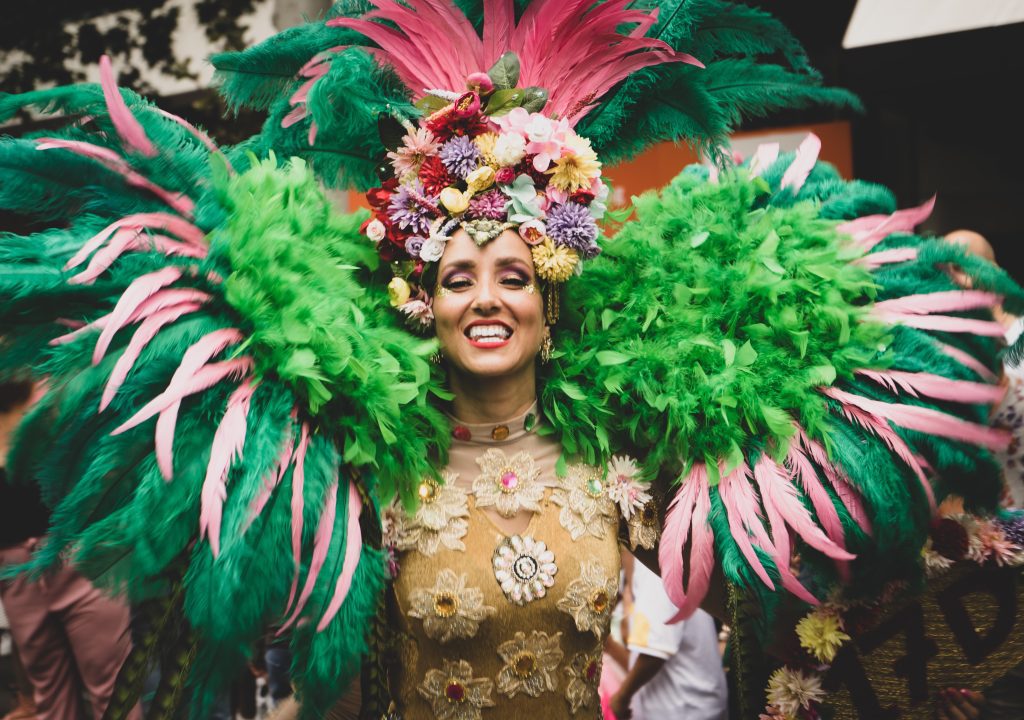It’s time for carnival! Mardi Gras celebrations remain some of the most vibrant and popular the world over, but what’s it all about, really? And when and where did Mardi Gras festivals first start? In this guide, we’ll take you through everything you could possibly want to know about this wonderful yearly celebration. Here are some fun facts about Mardi Gras you’ll want to remember.
1. Mardi Gras didn’t start in New Orleans.
While Mardi Gras carnivals are widely associated with New Orleans, Louisiana, the very first celebrations of this nature began over in Mobile, Alabama. The art of celebrating Mardi Gras this way dates all the way back to 1703!
2. It’s all about color choices.
Believe it or not, Mardi Gras has three ‘official’ colors which you’ll see all over carnival displays. They are purple, gold, and green, which are said to celebrate justice, power, and faith, respectively. These colors first came into association with Mardi Gras back in 1872.
3. It’s a Christian celebration.
Mardi Gras falls just before Ash Wednesday on the Christian calendar. It literally translates to “Fat Tuesday,” the final day before Lent. Lent, of course, is a crucial period for practicing Christians, a 40-day celebration where observers must fast, pray and give alms.
4. The famous motto has an interesting translation!
If you’re aware of many of Mardi Gras’ traditions and traits, you may already recognize the phrase “Laissez les bon temps rouler.” This is Cajun French for “let the good times roll!” It remains the official greeting of the celebration – meaning you’ll probably hear it a lot at the height of carnival!
5. When does Mardi Gras actually start?
What we know as Mardi Gras actually isn’t a one or two-day affair. Carnivals unfold over in New Orleans at the start of Epiphany, the Christian celebration marking the end of Christmas, or Twelfth Night. Epiphany celebrates the newborn Jesus Christ being visited by the Magi, or Three Kings.
So – ultimately – it’s carnival season from January 6th all the way to Ash Wednesday, towards the end of February!
6. Better mask up!
While we were all used to very different kinds of mask laws during the COVID-19 pandemic, there’s actually a whole other mask mandate for those riding carnival floats in downtown New Orleans. That is – you must disguise your face, either with a mask or with paint, if you wish to ride!
7. Who’s in your krewe?
Mardi Gras parades are run by groups known as krewes. These societies often have names inspired by ancient legends, and work hard on different themes from carnival to carnival.
8. Planning starts tomorrow!
Think krewes can take it easy at the end of carnival? Think again! Most krewes get to work on new themes, parade floats, and costumes from Ash Wednesday onwards – meaning there’s a whole 365 days of planning to fit in (366, if it’s a leap year!).
9. Krewe hierarchies are positively regal!
Believe it or not, Mardi Gras krewes have their own hierarchies inspired by the traditional royal courts of old. They’re typically headed by leaders, but also have kings, queens, dukes and maids. It’s sometimes a lengthy process to gain acceptance to a krewe, too – there may be a waiting list!
10. New Orleans rarely lets anything get in the way of Mardi Gras.
The krewes of New Orleans are so set on riding their floats out for Mardi Gras that celebrations may only have been canceled four or five times! The festivities were paused during World Wars I and II, and as a result of disease – Yellow Fever, back in the mid-19th century, and of course, COVID-19, in 2021.
FAQs about Mardi Gras
How long does Mardi Gras last?
Technically, Mardi Gras runs from January 6th to Fat Tuesday. However, in New Orleans, celebrations typically run for around two weeks up to Ash Wednesday.
What’s hidden in the Mardi Gras King Cake?
The colorful King Cake, served at Mardi Gras festivals, contains a rare trinket - often a token shaped like a baby - and the recipient who claims the trinket is declared king or queen of the carnival for the day!
Why is it called “Fat Tuesday?”
Fat Tuesday refers to the day before Lent starts, which means observing Christians can enjoy rich and fatty foods before giving them up for a period of abstinence, lasting 40 days.
Further reading:
https://factcity.com/tag/mardi-gras/
https://www.mardigrasneworleans.com/
https://www.history.com/topics/holidays/mardi-gras
Do you know any fun facts about Mardi Gras? Share them in the comments below!
